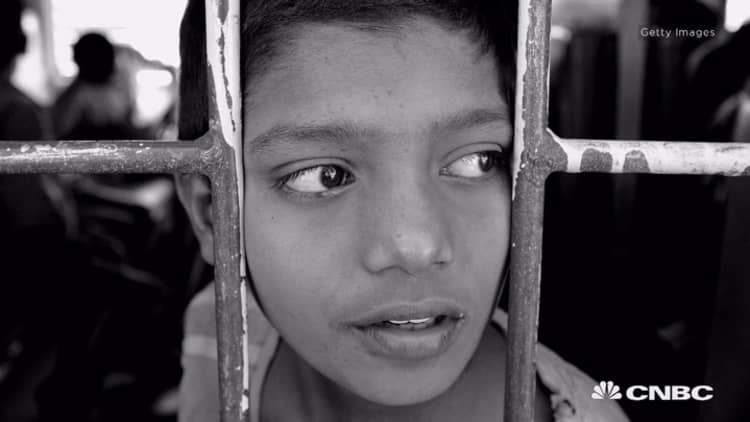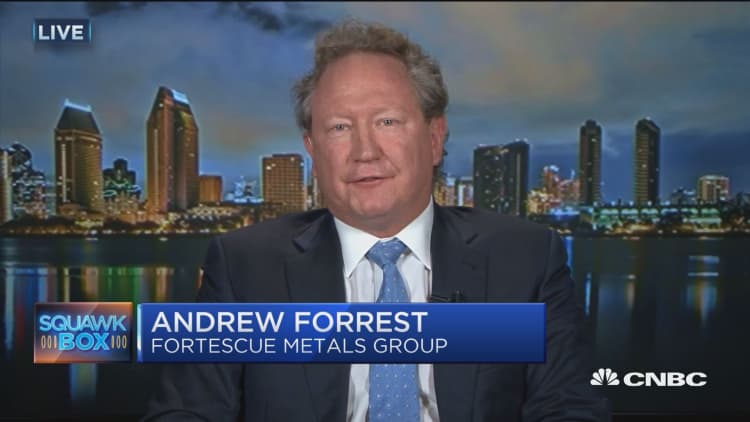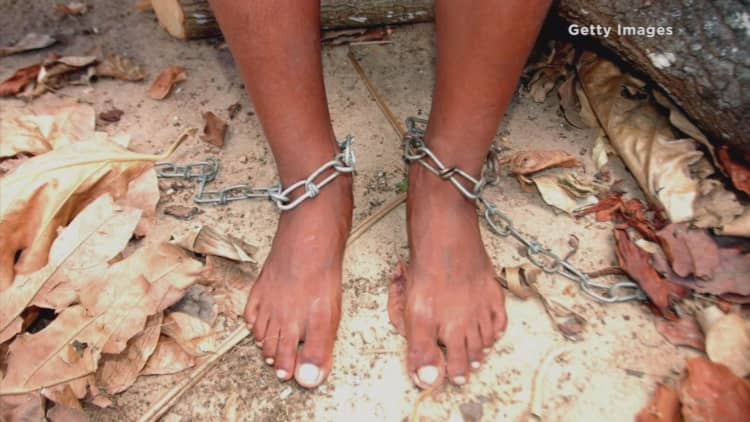


International companies face a high risk that slavery is part of their supply chains, particularly if they are in garment-making, farming or mining industries, a political risk consultancy warned on Thursday.
Verisk Maplecroft said businesses had a "high" or "extreme" risk of association with slavery in their supply chains in 115 countries, with China and India among the emerging economies where it was most likely.
Even the European Union as a whole was rated as holding a "medium risk" as a result of the flood of refugees into the bloc heightening the chance of migrants and refugees being exploited.
"When countries with the most advanced legislation struggle to completely eradicate slavery, it reveals the challenges governments in less developed regions face," Alex Channer, principal human rights analyst, said in a news release accompanying a Verisk Maplecroft report.
Almost 21 million people worldwide are victims of forced labor, according to the International Labour Organization. Modern slavery can take different forms, including debt bondage and trafficking. Women and children are particularly vulnerable, as are migrant workers.
Without precautions, multinational companies with complex supply chains risk unknowingly using forced labor. Last year, food and beverages giant Nestle went public with the news that it had found forced labor in its shrimp supply chain in Thailand.
"While most multinational companies have robust systems in place to ensure slavery does not occur among their tier-one suppliers, key numbers emerging from the research expose the extent of the challenges facing them lower down the supply chain, at the commodity level and from subcontractors," Verisk Maplecroft said on Thursday.
Clothes trade
Ten of the world's 12 biggest garment-exporting countries hold a high or extreme risk of slaves working in their supply chains, according to Verisk Maplecroft. These included China, India and Pakistan.
"Companies are heavily reliant on goods and raw materials from India and China. However, sourcing from these countries can come with a substantial risk of association with forced labor," Verisk Maplecroft said.
"The risk is endemic in India's agricultural sector and is prevalent in parts of its garment sector. The exploitation of children in the mining of minerals is also common. Forced labor, including the exploitation of young apprentices, occurs across multiple sectors in China, including electronics production, mining and agriculture. These risks are echoed across many Asian markets," it added.
Over 80 percent of sub-Saharan African countries were at high or extreme risk of slavery, including Kenya and Nigeria, two of the region's three largest economies.
The Democratic Republic of Congo was the fourth-highest risk country for slavery in the world. It is the world's largest producer of cobalt, a mineral that Verisk Maplecroft warns is the next "conflict diamond" and is used in mobile phones
Only four major Western economies were judged at low risk of slavery — the U.K., Germany, Finland and Denmark.
Verisk Maplecroft said the U.K. was the global leader in fighting forced labor through legislation, following the launch of its Modern Slavery Act in 2015. The act obliges large U.K. and international companies that supply goods and services to the country to disclose measures taken to remove slavery from their supply chains.

